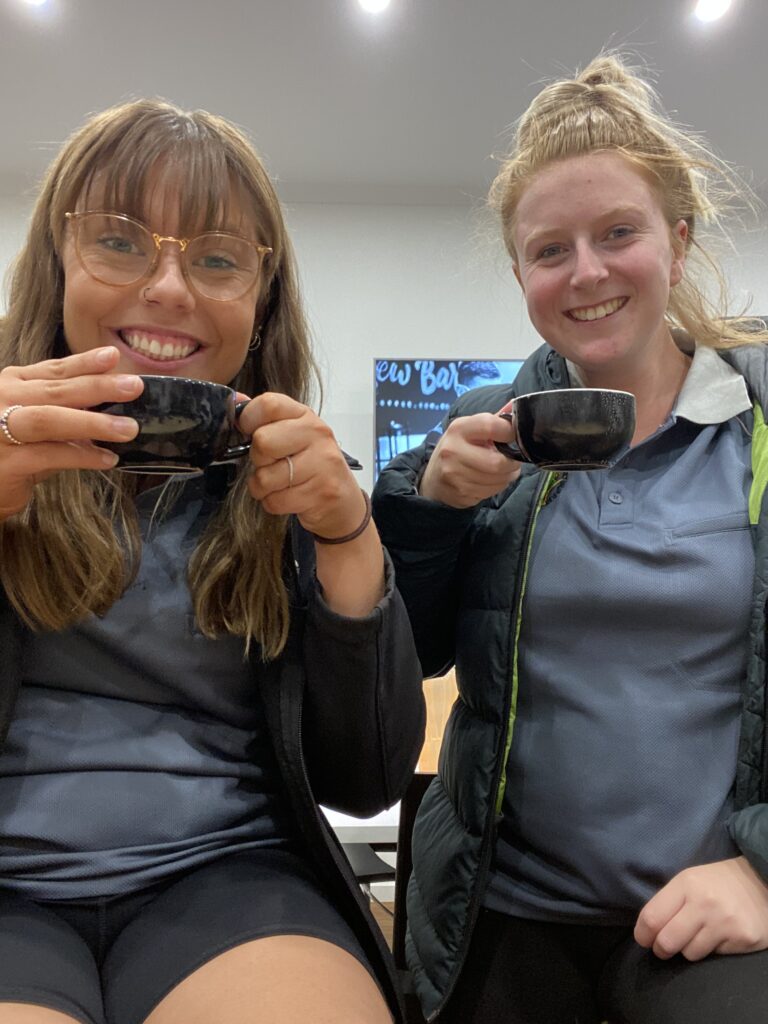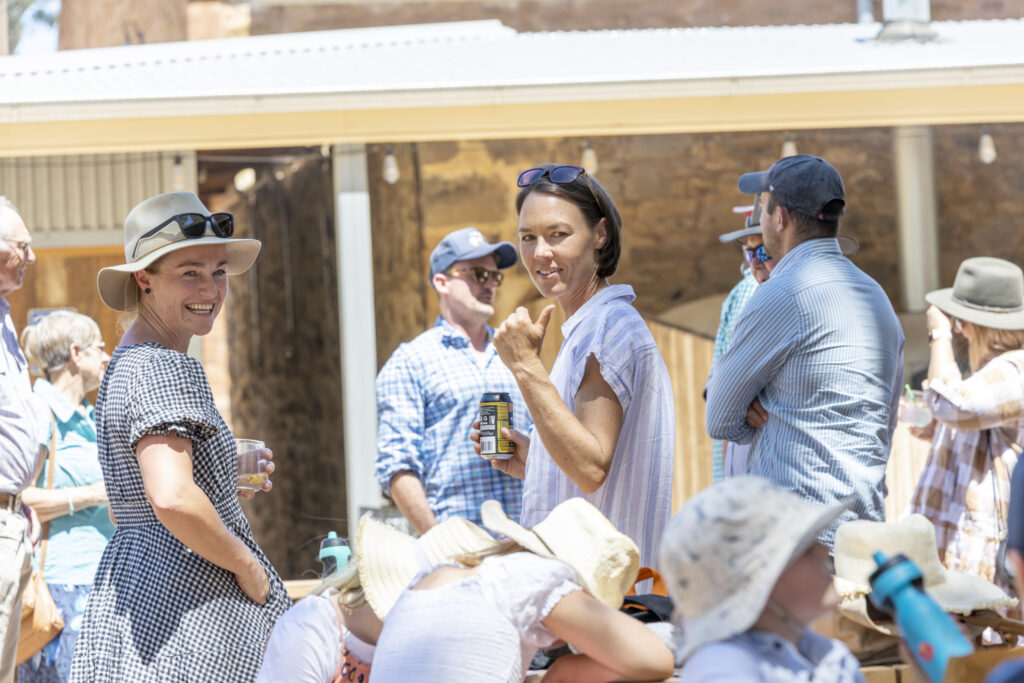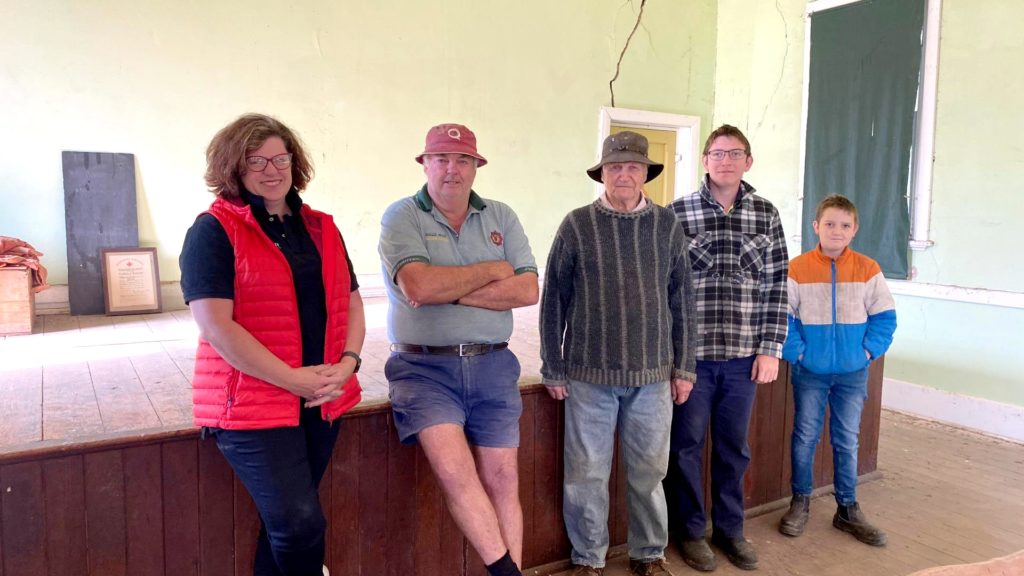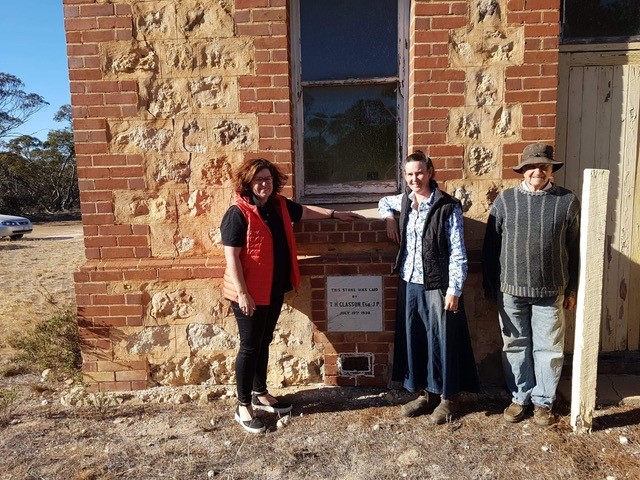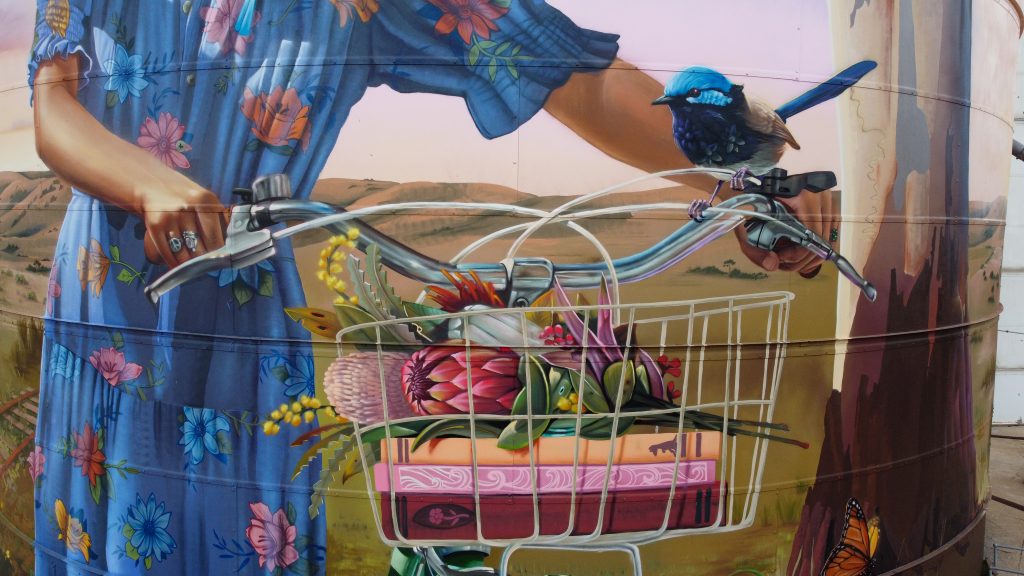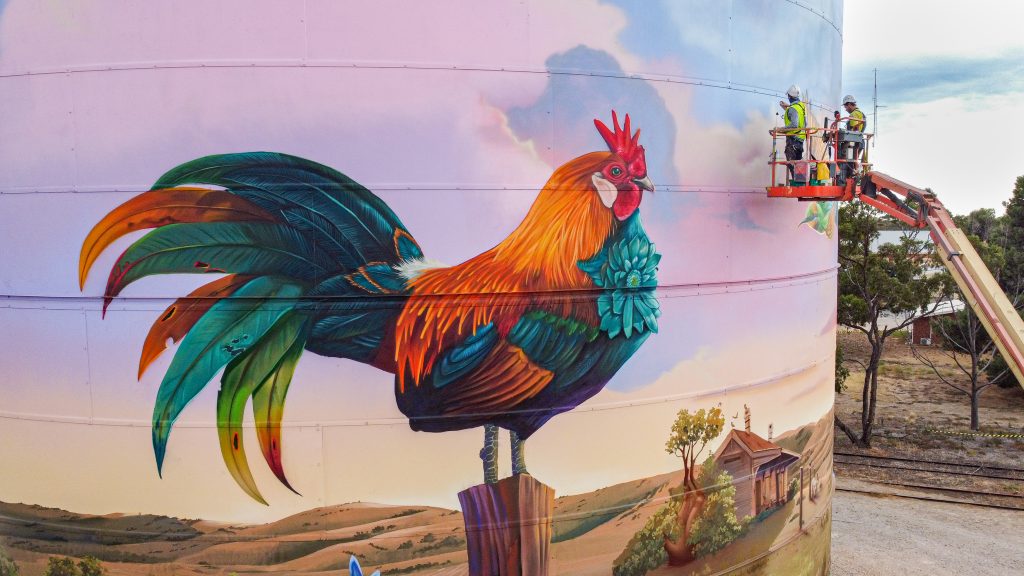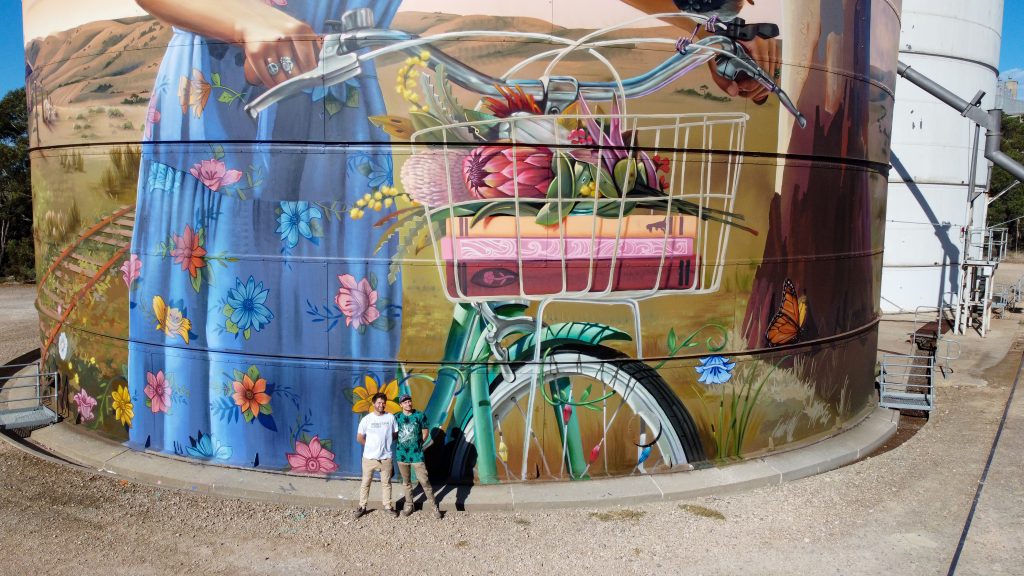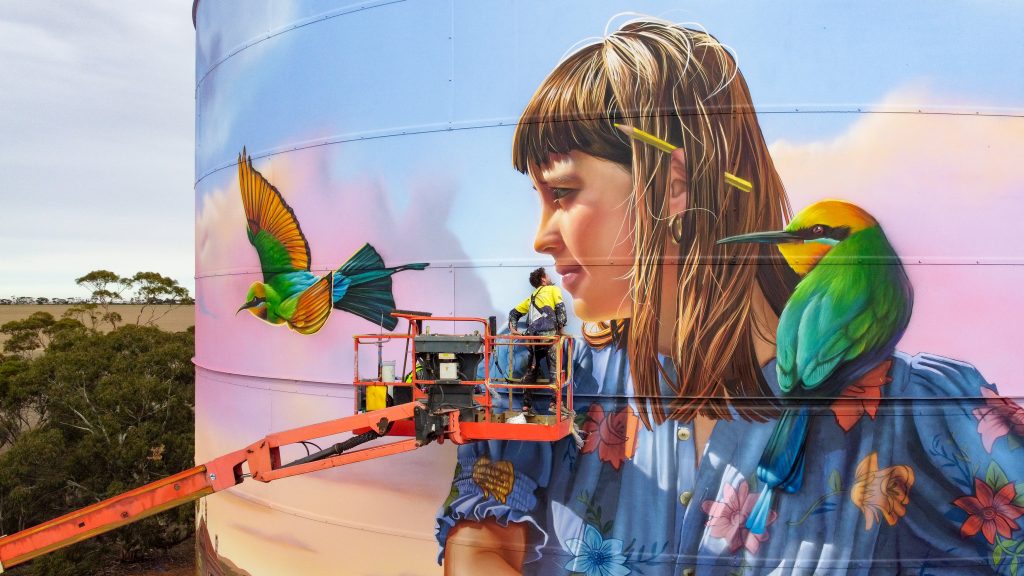Foundation for Rural & Regional Renewal (FRRR)
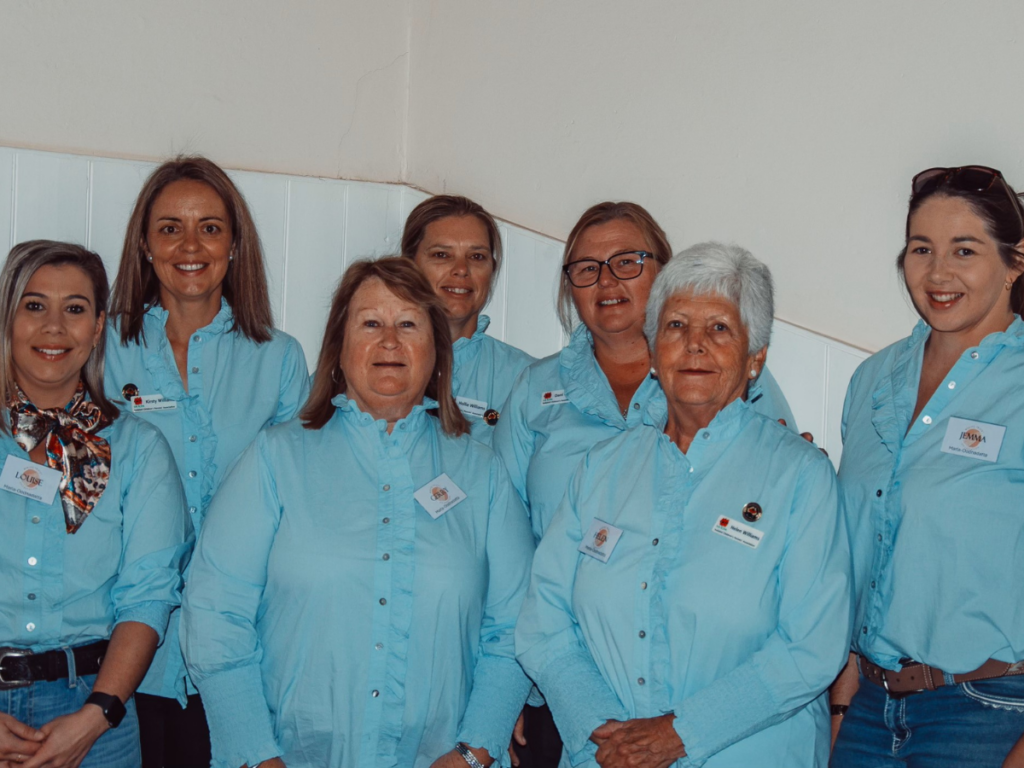
While the population of the South Australian Arid Lands is small, with just 24,000 people to a 525,000km2 area, there is a strong and proud community spirit. Many families and people volunteer in community and government-led organisations, on top of their personal responsibilities. In the face of severe drought conditions, it can be difficult to maintain this spirit of resilience. Between 2017 to 2020, the region experienced one of the worst droughts on record. Every landscape, community, business and family in the region continues to feel the impact of that drought to this day. Communities in this region must adapt and prepare for educating children in a very different way to their city counterparts, given the ever-changing impacts of seasonal weather, including drought.
Isolated Children’s Parents Association Marla-Oodnadatta (ICPA) is responsible for organising an annual state conference designed to enhance and enlighten agriculture-dependent communities and drive local action to assist in preparing for future challenges. This year’s ICPA conference was partially funded by a $5,000 FRRR grant awarded through the Community Impact Program, funded by the Australian Government’s Future Drought Fund as part of the Helping Regional Communities Prepare for Drought Initiative.
By hosting the conference in Quorn, the ICPA made it easier for their members throughout SA to voice any concerns in relation to educating geographically isolated children. They reported that 35 separate organisations and 150 individuals participated.
They also organised a family-friendly, post-conference event to attract and engage the involvement of more men and families in the ICPA. Festivities included a town treasure hunt put together by Rural Aid, face painting, glitter tattoos, an auction, and a 20/20 cricket game between the ICPA men and Quorn cricket club.
By securing the grant, ICPA enabled their volunteer member base to attend the conference at no charge, strengthening connections and setting themselves up well to achieve great outcomes long into the future.
Kirsty Williams, the Marla-Oodnadatta Branch President said that it is great to have support for regional and remote groups like the ICPA. “Being volunteers, the support of FRRR makes our job that little bit easier.”
In an effort to empower local youth and provide employment skills, Karoonda District Council successfully secured a $10,000 FRRR ABC Heywire Youth Innovation Grant under the 2022 idea, ‘Discover Your Future’, with a project that is now brewing success for local youth.
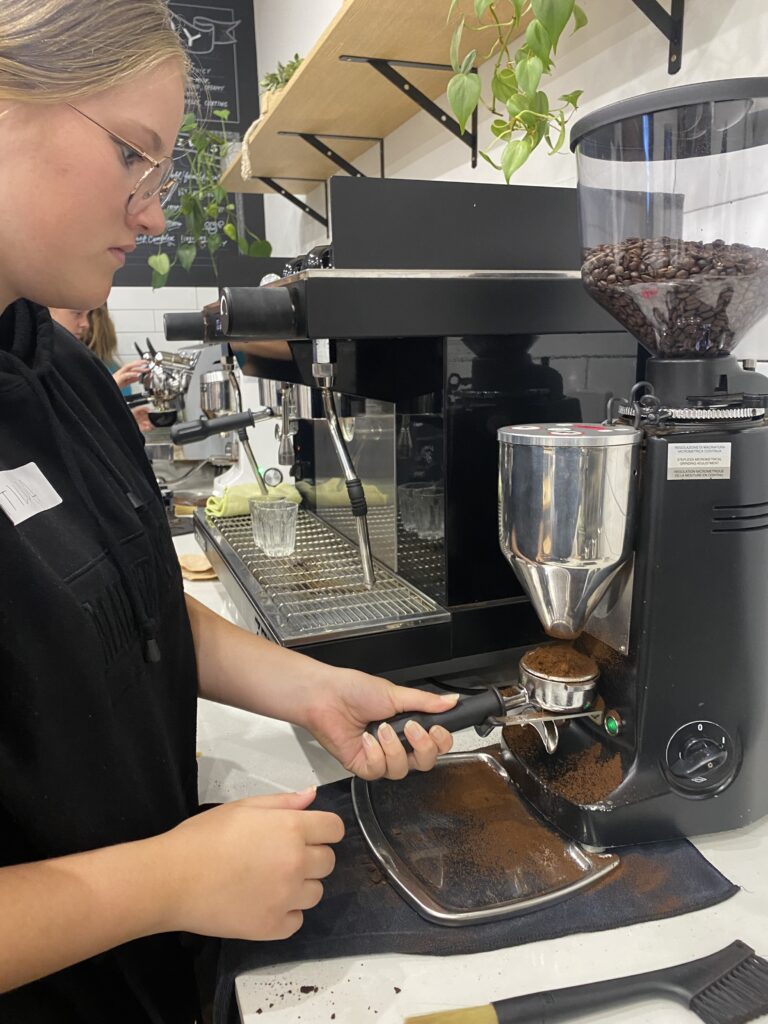
The project, spearheaded by the council’s Youth Action Committee (YAC), aimed to provide professional training and entrepreneurial opportunities for young individuals in the small regional area, located 150 km east of Adelaide. With just 17 council staff and a population of 1,090 spread over 4,415 km2, the council recognised the need for initiatives that would not only develop skills for local youth, but also nurture future leaders and provide a funding source for future youth projects.
The YAC is a group of young people aged between 12-25 designed to develop the leadership and life skills of its members. The group discusses youth issues and helps to organise youth and community events. The YAC members identified barista training as a versatile skill set crucial for enhancing employment prospects in Karoonda. With just two cafés in town, local youth faced challenges in gaining this skill set, compared to their metropolitan counterparts.
Unable to secure a trainer on site in Karoonda, the fifteen young people aged between 13 and 20, attended training at the HG Coffee School in Adelaide. While this made for a long day, the change of site had a hidden benefit – the travel together on the bus provided valuable binding time for the young people and council staff.
The training covered theoretical and practical aspects, ranging from coffee styles to customer service and machine hygiene. From there, participants received their internationally-recognised Level 1 barista certification. From this training, two young individuals secured part-time employment locally, while three others found opportunities in Adelaide, underscoring the effectiveness of the barista training in enhancing employability.
However, the project didn’t conclude with training alone. With the acquisition of a coffee machine and equipment, the YAC established a mobile coffee business strategically located at the Karoonda Institute, a community building owned by the council and a hub for civic and community events. The youth were involved in planning and discussing different business models and the best way to run a mobile coffee setup for their community. This mini social enterprise not only provides a local platform for youth to hone their skills, but also generates ongoing revenue to support future activities and ideas by the Youth Action Committee, ensuring their sustainability and lasting impact.
Upper North Farming Systems’ (UNSF’s) mission is to facilitate capacity building and empowerment of the agricultural community across the upper north region of South Australia. The group focuses on adapting and connecting farmers so they can learn from each other and from their shared experiences, and not farm in isolation. They do this by bringing farmers together in what they call Hubs. It’s a large and diverse geographical area, encompassing Booleroo Centre, Crystal Brook, Hallet, Jamestown, Laura, Peterborough, Nelshaby, Orroroo, Quorn and Wilmington. It’s a harsh climate, and when times are tough, they are very tough. The region has experienced significant declines in population and services over the past 30 years and the social fabric of communities in many areas has become frayed.
With the majority of communities in the region still reliant on agriculture, the social toll of the latest drought – the longest dry on record in 2020/21 – was evident, with symptoms of volunteer burn-out, self-isolation and mental health related issues.
Farmers know technology is essential, and farming systems have evolved significantly since the previous major drought, with stubble retention, improved efficiency of water use and a better understanding of livestock nutrition.
These communities are adaptable, open to innovation and aided through programs that promote not only professional connection, but also social and community connections, especially as these areas are typically not well-serviced by government research bodies and private consultants.
There are currently 11 Hubs under UNFS – eight geographical Hubs: Booleroo / Appila, Morchard / Orroroo / Pekina / Black Rock, Melrose, Gladstone / Laura, Jamestown, Nelshaby, Quorn and Wilmington and three non-geographic Hubs: Ladies on the Land, New Farmers and the Ag Tech Hub. The establishment of the Hubs in 2019 recognised the need to retain networks within the group and foster the tackling of issues on a smaller scale, as well as the importance of coming together on a social level.
A $20,000 Networks to Build Drought Resilience grant enabled UNFS to deliver the ‘Tools, Tech and Transformation’ workshop for farmers and agribusinesses. The key event was followed by a series of nine Hub events to provide the opportunity for networking, info-sharing, and learning about new farming systems and techniques to improve drought resilience. A ‘farmer-to-farmer’ learning model was recognised as a valuable and efficient mechanism to improve the productivity, profitability and sustainability of the agricultural industry in low rainfall zones.
The project reached 205 participants across 10 events that spanned six sector networks (Farm Business, Research Institute, NFP’s / Community Organisations, Consultants, Off Farm Business, Government Agency). Targeting farmers and agri-business directly, attendees learnt about tools aimed at improving efficiencies, sustainability and outcomes of operations like automatic feeding, as well as technology evolutions and business systems like satellite imagery on the farm scale, and succession and transition planning. Importantly, the solutions offered were all commercially available to be adopted on-farm, and farmers were able to speak directly with professionals in the fields, with discussions encouraged. They left with upto-date knowledge to help them build more resilient farming systems.
The Hub events ensured accessibility for farmers who couldn’t afford too much time away from their land. They were able to talk with neighbours and researchers about the outcomes of the 2021 season and what they might be able to do better next time. Questions like when and how to de-stock, how to ensure you’re looking after genetics and bloodlines, and considerations around agisting, planting times, and upgrading tech vs repairing machinery were raised. Each Hub session included a training session in a tool, tech or system (identified from the key event by their elected Hub Representative), as well as a planning session identifying how to implement the new skills and knowledge on-farm, and where they require additional support.
Through the project, participants built knowledge and understanding of the risks posed by drought and climate change and learnt new concepts on a range of topics that can be adapted for drought and climate preparedness.
Communities had the opportunity to connect, train, converse (something many would not normally do in their usual day-to-day business) and lean on systems and each other so they are more prepared for future challenges
It’s not often that a toilet block is a tourism drawcard for a community, but that’s just what this project has achieved.
The Snowtown Centenary Park Inc oversees the grounds at North Terrace, Snowtown, 145 km north of Adelaide in SA. They’ve been on a mission to improve the facilities and, over the past 10 years, have extended the football change rooms, built a skate park and recently renovated the interior of the toilet block.
The outside of the toilet block however, still left a lot to be desired – a dull and dirty bessa block structure, with no visual appeal. It was truly a ‘blank canvas’.
An SRC grant for $10,000, funded by a private donor, enabled the Park Committee to engage a professional artist to paint a mural on all four walls, to brighten the centrally located facilities.
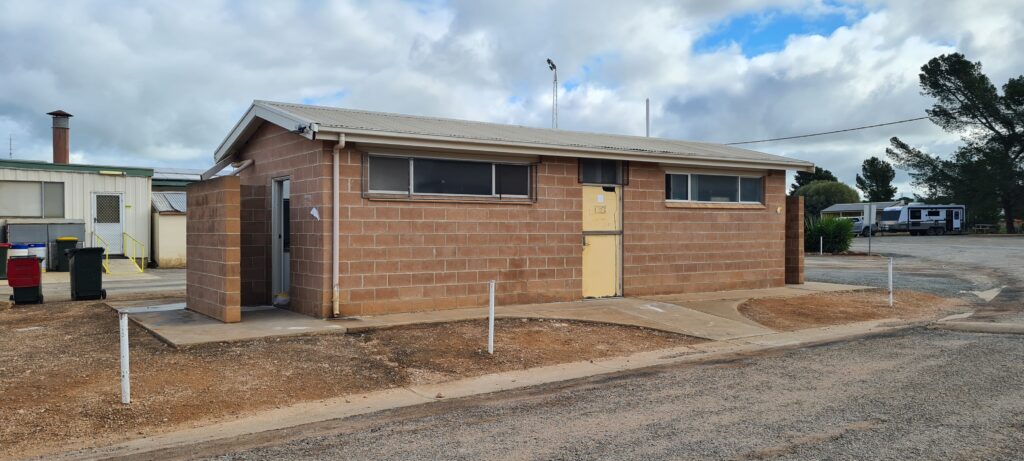
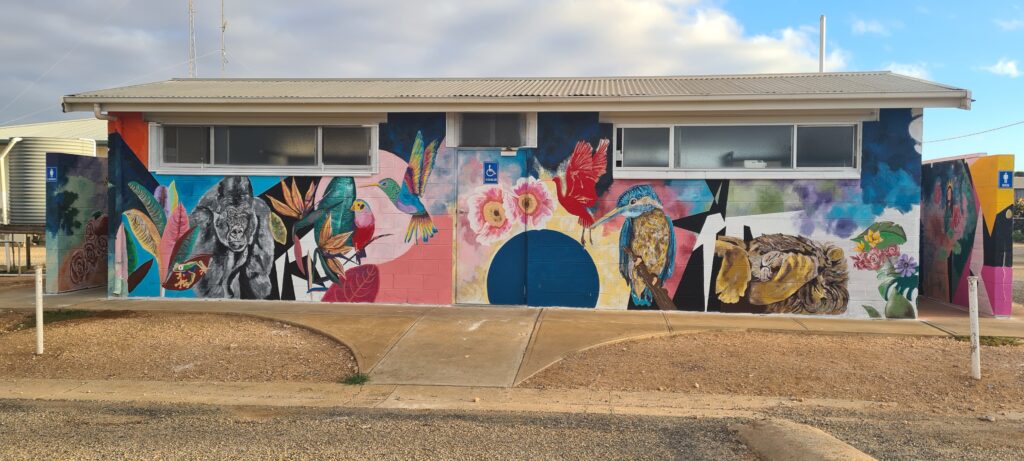
The mural has transformed the dull façade of the Centenary Park amenities block with vibrant images of bird and animal life. It is now regularly admired by locals and visitors to Centenary Park. With animals and objects of every letter of the alphabet to find and discover, it’s great for people of all ages, from young children looking for animals, teenagers posing for photos and adults enjoying the beautiful artwork. This mural is bright and colourful and a wonderful sight for tourists calling in off the highway and visitors to the region.

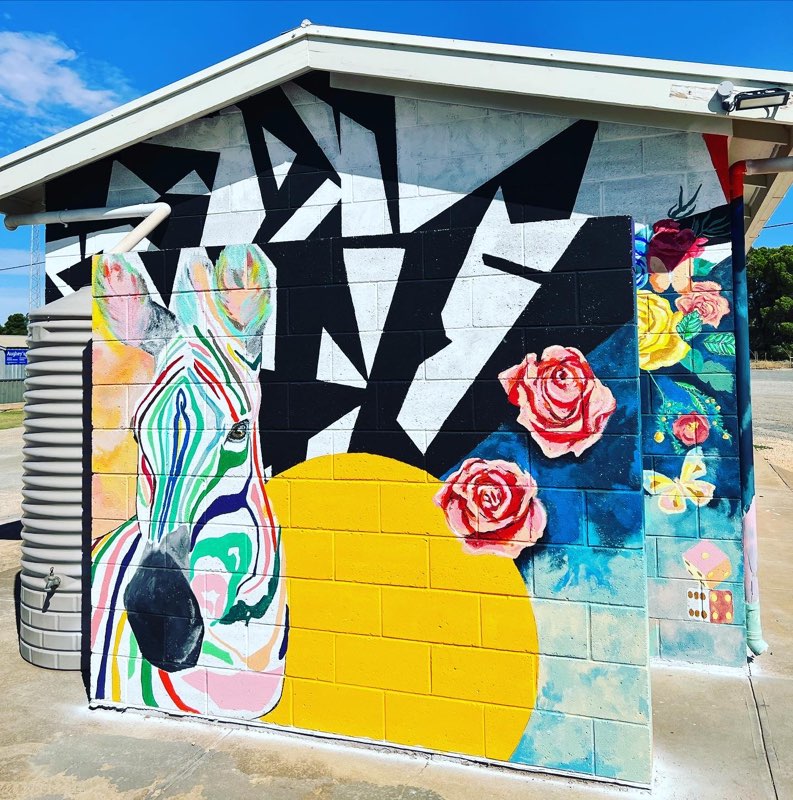
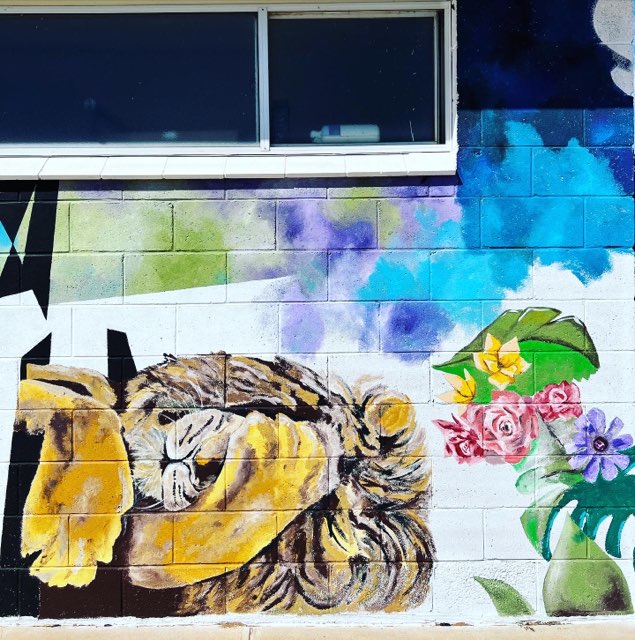
“So many people have stopped to admire the artwork and we have had an increase in caravan visitors to the park … the mural has had a positive impact on the image of the whole town. The toilet block looks amazing. Before it was dull and boring, now it is bright, vibrant and interesting.”
Project Manager and Committee member Bernie Altmann.
Upper North Farming Systems’ (UNSF’s) mission is to facilitate capacity building and empowerment of the agricultural community across the upper north region of South Australia. The group focuses on adapting and connecting farmers so they can learn from each other and from their shared experiences, and not farm in isolation. They do this by bringing farmers together in what they call Hubs. It’s a large and diverse geographical area, encompassing Booleroo Centre, Crystal Brook, Hallet, Jamestown, Laura, Peterborough, Nelshaby, Orroroo, Quorn and Wilmington. It’s a harsh climate, and when times are tough, they are very tough. The region has experienced significant declines in population and services over the past 30 years and the social fabric of communities in many areas has become frayed.
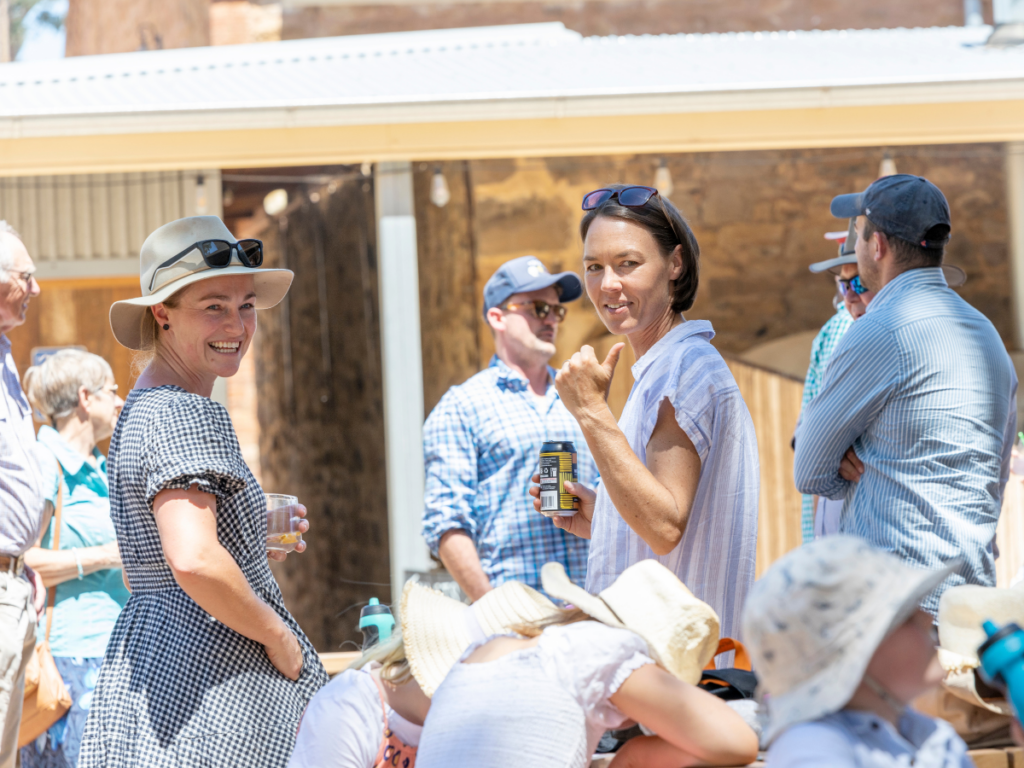
With the majority of communities in the region still reliant on agriculture, the social toll of the latest drought – the longest dry on record in 2020/21 – was evident, with symptoms of volunteer burn-out, self-isolation and mental health related issues.
Farmers know technology is essential, and farming systems have evolved significantly since the previous major drought, with stubble retention, improved efficiency of water use and a better understanding of livestock nutrition.
These communities are adaptable, open to innovation and aided through programs that promote not only professional connection, but also social and community connections, especially as these areas are typically not well-serviced by government research bodies and private consultants.
There are currently 11 Hubs under UNFS – eight geographical Hubs: Booleroo / Appila, Morchard / Orroroo / Pekina / Black Rock, Melrose, Gladstone / Laura, Jamestown, Nelshaby, Quorn and Wilmington and three non-geographic Hubs: Ladies on the Land, New Farmers and the Ag Tech Hub. The establishment of the Hubs in 2019 recognised the need to retain networks within the group and foster the tackling of issues on a smaller scale, as well as the importance of coming together on a social level.
A $20,000 Networks to Build Drought Resilience grant enabled UNFS to deliver the ‘Tools, Tech and Transformation’ workshop for farmers and agribusinesses. The key event was followed by a series of nine Hub events to provide the opportunity for networking, info-sharing, and learning about new farming systems and techniques to improve drought resilience. A ‘farmer-to-farmer’ learning model was recognised as a valuable and efficient mechanism to improve the productivity, profitability and sustainability of the agricultural industry in low rainfall zones.
“Through the Tools, Technology and Transformation event series, farmers and landholders have been provided with an abundance of information that can be adapted and changed on farm. Therefore, these tools that have been taken from the events can help farmers change their way of thinking and help their preparedness for drought or any other climate challenges they may face.”
The project reached 205 participants across 10 events that spanned six sector networks (Farm Business, Research Institute, NFP’s / Community Organisations, Consultants, Off Farm Business, Government Agency). Targeting farmers and agri-business directly, attendees learnt about tools aimed at improving efficiencies, sustainability and outcomes of operations like automatic feeding, as well as technology evolutions and business systems like satellite imagery on the farm scale, and succession and transition planning. Importantly, the solutions offered were all commercially available to be adopted on-farm, and farmers were able to speak directly with professionals in the fields, with discussions encouraged. They left with up-to-date knowledge to help them build more resilient farming systems.
The Hub events ensured accessibility for farmers who couldn’t afford too much time away from their land. They were able to talk with neighbours and researchers about the outcomes of the 2021 season and what they might be able to do better next time. Questions like when and how to de-stock, how to ensure you’re looking after genetics and bloodlines, and considerations around agisting, planting times, and upgrading tech vs repairing machinery were raised. Each Hub session included a training session in a tool, tech or system (identified from the key event by their elected Hub Representative), as well as a planning session identifying how to implement the new skills and knowledge on-farm, and where they require additional support.
Through the project, participants built knowledge and understanding of the risks posed by drought and climate change and learnt new concepts on a range of topics that can be adapted for drought and climate preparedness.
Communities had the opportunity to connect, train, converse (something many would not normally do in their usual day-to-day business) and lean on systems and each other so they are more prepared for future challenges.
Yarning and other culturally-informed models of health can support people in the community to explore factors that impinge on social-emotional wellbeing (SEWB) and co-create solutions for individual and family wellbeing, including young people.
(Murrup-Stewart et al, 2021)
The Northern River Community Healing Hub is a network of local Indigenous and non-Indigenous volunteers who practice a range of culturally informed trauma-integrated healing modalities including weaving circles, art therapy and bodywork (massage). The hub was established following the catastrophic 2022 flood event in the Northern Rivers.
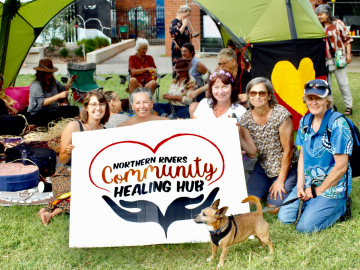
They received a grant for $24,570 through the Rebuilding Futures program, funded by the Suncorp Group to support the hub practitioners to grow and develop their work through increased service delivery moving from an entirely volunteer model to a hybrid paid / volunteer operation. NRCHH is available to all people, regardless of cultural background with a focus on their target population: Aboriginal and Torres Strait Islander people, children and young people, families, including older people. The project also included Mobile Hub operations to enable better access to the service within communities themselves – where they need them most, and in consultation with community.
The healing practice activity funded by the project has directly benefitted 639 people across the community at outreach to the pod villages of Coraki and Lismore, and tents at the Nimbin Aquarius Festival and Murwillumbah Kinship Festival, and workshops for a Queer Flood Recovery Event and an event for school children. In addition there have been weekly sessions at the Healing Hub including: 15 bodywork sessions per week free to the community; free flowing drop in weaving / yarning circle on Wednesdays; and clay art therapy once a week.
The NRCHH has evolved through the project. The paid / volunteer mixed model has been successful and they are now seeking input and collaboration that will deepen partnerships and relationships with the organisations that they currently work with to continue.
Project Manager Ruth Rosenhek said, “At the Healing Hub, we provide a de-clinicalised, informal soft-texture gentle space to support healing for our community that focuses on the whole person including a phenomenally successful bodywork program that runs alongside cultural activities such as weaving and yarning circles, creative arts and community connection. We have found that 18 months past the 2022 flood events, people continue to be managing high levels of stress and trauma. These cultural activities that involve sitting on country, slowing down the pace, connection and belonging are all powerful healing agents.”
It has been over 20 years since the rural town of Marama has had an active committee. In past generations of the committee, Marama Community Incorporated has been extremely social, connected and dedicated to keeping the town together. The main purpose of the committee was to bring people and community together with sport, dances, weddings, social events and church services. All of these events were usually held at the community-owned hall.
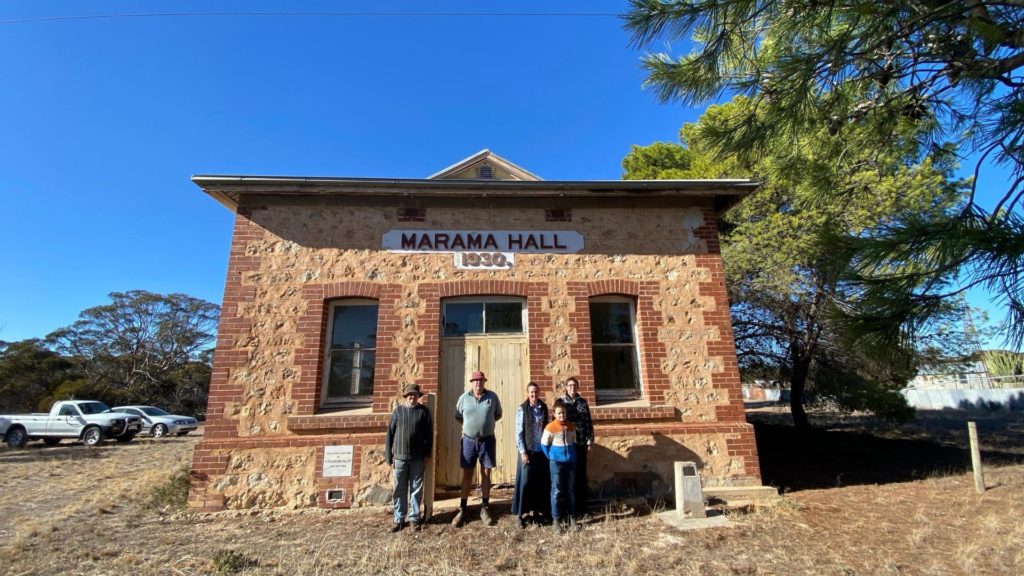
Now with a newly elected committee, the current generation was keen to foster a sense of belonging by renewing and improving the hall and providing a central place for activities to be held once again, however the space had fallen into disrepair after years of no use.
During the time the new committee was being elected, the district was also experiencing severe drought. A lot of the local farming community were feeling the effects on their mental health from prolonged drought. This added another layer of importance to the renewal of the hall; the community needed somewhere to come together and support one another.
With a $150,000 grant from the Australian Government’s Future Drought Fund’s Networks to Build Drought Resilience the committee was able to fund the underpinning, roof replacement, ceiling replacement, stone work, paint the interior, electrical work (including air-conditioning), and new toilet facilities.
The project relied on a big commitment from the community to get involved through volunteer work, local contractors and working bees to get the job done. But there was never any doubt they wouldn’t pull through!
Since completing the renovations on the hall the community has seen a dramatic shift in the attitudes of residents. Not only did the project give them a reason to meet throughout construction, but they now have a shared space to use that they can be proud of.
“Overall, the finished project is something we as a community are very proud of, and it has helped bring us together to work as a team to achieve a better, more user-friendly outcome.”
The hall has been host to a number of important community events since its completion and is booked in to host future events held by key industry groups that will benefit the community by improving abilities to adapt, reorganise or transform in response to a changing climate, increasing variability and scarcity of rainfall and changed seasonality of rainfall.
On Narrungga Country
About 160 km from Adelaide, you’ll find the small but mighty town of Bute. With a population of 250 people, the residents of this South Australian farming town are no strangers to the hardships brought on by extreme drought and below-average rainfall.
In early 2021, the Barunga West Council, alongside Bute Onwards 2000 Progress Committee, held a public community meeting to discuss plans for a project that would see a new wave of tourism brought to the town to stimulate the economy. The proposal was the Bute “Beaut” Silo Art project, which was met with resounding support from the community. This included Viterra, the owners of the silos that can be seen from much of the town.
After successfully applying for a $49,915 Tackling Tough Times Together (TTTT) grant, funded by the Australian Government, the Council and Progress Committee began work on the project. A survey was shared via the Council’s Facebook page to ask community members’ opinions on what should appear in the final design. The results revealed preferences for local flora and fauna, agriculture and Bute’s history. With the brief developed, the Council reached out to award winning street art network, Juddy Roller, and New South Wales artist Scott Nagy was selected to lead the project.
Initial plans were to paint the silos in September 2021 prior to the harvest season but unfortunately COVID lockdowns delayed the project. The project recommenced in March / April of this year when the silos weren’t being used by Viterra.
The huge artwork features a woman with a bike in a paddock surrounded by a number of local Bute icons. In her basket, she has native flowers and books. There is a rooster on a fence post, which represents farming but is also a nod to the local sporting clubs as all Bute clubs are the Roosters. The local fauna is represented through the Blue Wren and Rainbow Bee Eater, plus local flora in native orchids and the Hummocks Range in the background.
This silo art project has really helped the community recover from drought by giving residents a common goal to work towards – creating the stunning artwork in the centre of town. There has been wonderful flow on benefits from the project; more tourists are choosing to visit, and there’s a renewed sense of pride and enthusiasm among locals for their home. The corner store and hotel are reporting more visitors stopping into their stores and spending additional money and the Council reports that their six-site caravan park, that was rarely full, has been booked out on many occasions.
The project has also been a catalyst for Bute receiving another $250,000 grant from Wellbeing SA to connect the outdoor play spaces and encourage more locals and visitors to be more physically active.
For more inspiring stories like this, head to our FY 2021/22 Annual Review.
Nestled in the heart of the Bundaleer Forest lies a quiet haven where local South Australian families can visit to reconnect with nature, and each other. Just eight kilometres from Jamestown, the picnic area of the Bundaleer Forest and the idyllic Maple Walk have been a local favourite for years. And yet, something was missing.
Until 2018, families would have to drive more than 200km to visit the nearest nature play park. These types of parks provide an opportunity for children to ignite their imagination, and enjoy learning and developing key skills while being surrounded by nature.
After the devastating bushfires that tore through the Bundaleer Forest in 2013, it became clear that the community needed a new tourist destination to drive business into the area.
After three years of work by the Northern Forests Community Initiatives Group, The Bundaleer Forest Community Areas Association (BFCAA) was formed. Their mission is to protect, preserve, promote and enhance the recreational, environmental, cultural, historical and educational values of the community areas of the Bundaleer Forest – and delivering the nature play area was just one of their initiatives.
The local community applied for the FRRR Small Grants for Rural Communities program, which provided $5,000 in funding for the nature play area, thanks to support from The Yulgilbar Foundation. Over 12 months, the community banded together to design and build the new park, with enormous input from the BFCAA volunteers, and Lion Club volunteers.
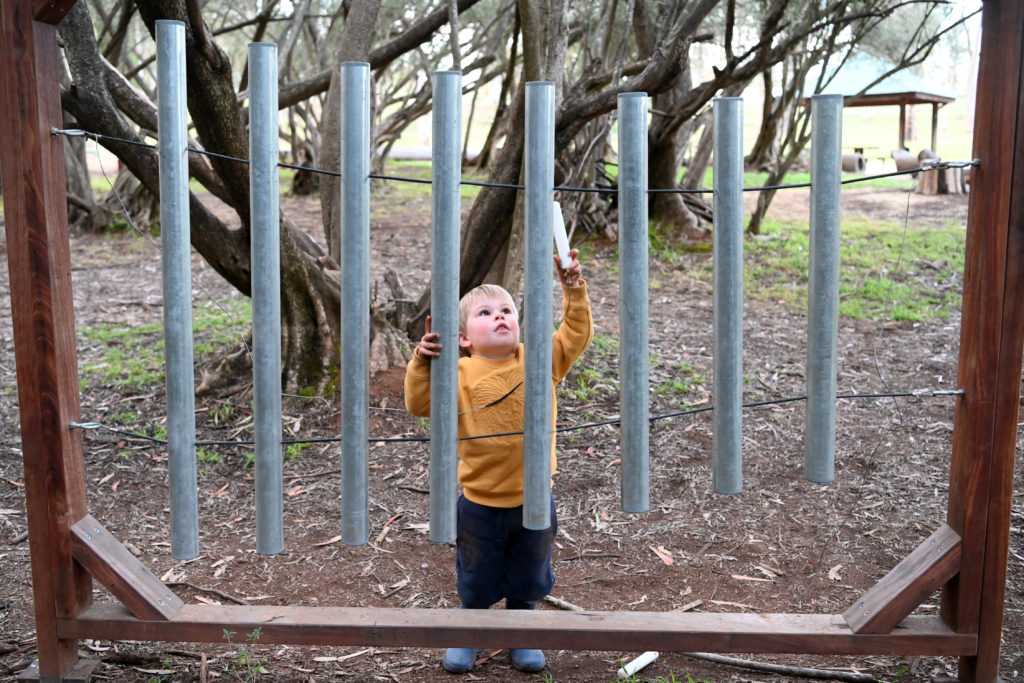
The finished nature play area is full of things to do, with a basket swing, picnic table & story time area, goblin & fairy house, mud kitchen, stepping logs, giant xylophone, swinging bars, tight rope and climbing rope. The facility has encouraged local schools, kindergartens and other groups to visit locally, and enjoy the benefits of having such a fun and engaging play area right on their doorstep.
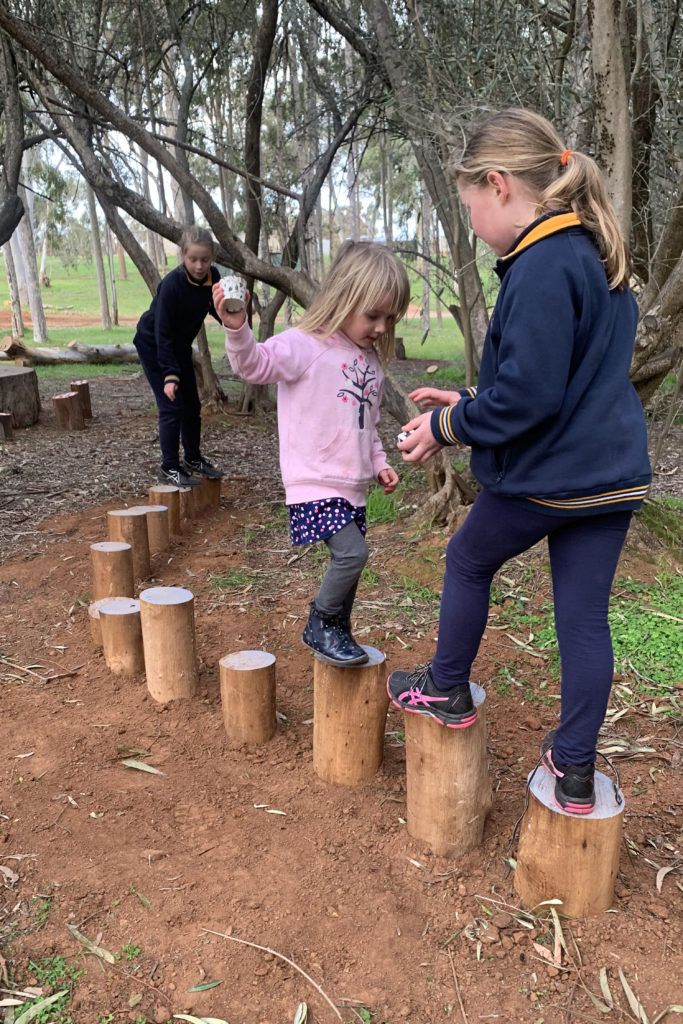
Each of the nature play structures has a specific goal for promoting the development of strength, creativity, and providing a sensory experience. Children can experience being in nature and enjoying the fresh air, while developing their balance, body awareness, concentration and gross motor skills.
“Anyone who sits quietly and observes children playing in the Bundaleer nature play space will fully understand the impact of this project. While it is impossible to measure, there is a phenomenal impact on many levels of children development through nature play. It’s where children’s imaginations can come to life, and world where fairies and dragons are more real than make believe. It’s where children cooperate to make music together on the giant instrument, and learn to take turns on the swing and hold the hand of a younger chid as they learn to balance on the stepping logs.”
Mel Kitschke
Bundaleer Forest Community Areas Association
The Pain Revolution, in conjunction with the University of South Australia, set out to establish a community-led health initiative to promote best-practice pain management services in country NSW and Victoria, by raising awareness of pain neurobiology and the use of a bio-psycho-social pain model of education and care.
If that all sounds quite complicated, these facts are simpler to understand, though not very easy to digest:
- One in five Australians lives with chronic pain. In those over the age of 65, this increases to 1 in 3.
- According to The Pain Revolution, persistent pain is a bigger disability burden on rural Australia than cancer and diabetes combined.
- It is the most common reason for early departure from the workforce, and a known risk factor for severe depression and suicide.
What’s more, access to pain management services is poor in rural communities, and most attempts to address the problem include ‘travelling health teams’ and ‘country visits’ from city health specialists. With GPs reporting that they have insufficient knowledge, skill and self-efficacy to deliver best practice for persistent pain patients, The Pain Revolution stepped in to design a sustainable program of training, mentoring and resourcing with a focus on local capacity building.
Founded in 2017, The Pain Revolution is a cross sector collaboration led by Professor Lorimer Moseley from within the School of Health Science at the University of South Australia. It also draws on expertise from others working in the field, holding strong partnerships with the National Rural Health Alliance, Pain Australia, Australian Pain Society, the Australian Physiotherapy Association and the Australian College of Sports & Exercise Physicians. Their collective aim is to embed the capacity to deliver best practice pain education and care within rural and regional communities, and they are doing this through the Local Pain Collectives (LPC) program.
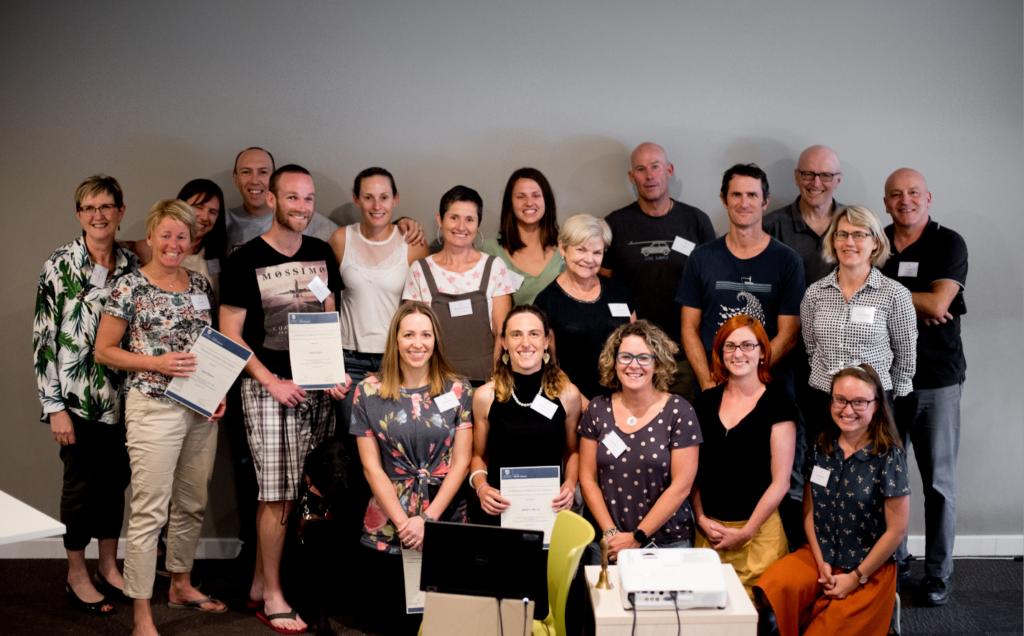
Pain science is an area with lots of interesting research and developments; new and effective approaches have been identified to prevent and manage persistent pain, placing emphasis on active approaches (movement and learning based) rather than passive ones (drugs, massage and surgery). These new self-management approaches can seem counter-intuitive amongst health professionals unless they have an understanding of contemporary pain science. International guidelines now universally recommend education as first-line treatment, but this is rarely delivered effectively as part of usual care.
The Pain Revolution determines where to target their efforts by assessing which rural and regional communities are flagged by the Australian Health Atlas as having excessive opioid prescriptions, back fusions and knee replacements. In response, the LPC program aims to upskill GPs and allied health professionals in best practise pain education and care within these communities, and establish a supported network amongst this difficult area of medical practice.
The Pain Revolution provided scholarships to twelve health professionals who live in regional communities across NSW/VIC. These individuals were trained to organise and deliver pain education events to the general public and other health professionals, and become clinical leaders and ‘champions for change’ within their community. Funding from the Enhancing Country Health Outcomes (ECHO) grant program enabled them to form a Local Pain Collective and deliver pain education in six regional areas of NSW: Wollongong, Nowra, Jindabyne, Cooma, Wagga Wagga and Albury/Wodonga.
Each Collective has delivered activities including pain education sessions, clinical support for knowledge to practice transfer, and a facilitated platform for peer-to-peer learning and resource sharing. A three-day workshop strengthened the network, bringing together the local pain educators, the reference group, content experts and facilitators, and monthly network meetings followed. The workshop also informed where skills could be developed, and this fed into the design and delivery of a monthly webinar series. Topics of direct relevance to the rural and regional context included understanding opioids, appraising evidence, facilitation skills, implementing behaviour change principles to pain care, and choosing words carefully when talking to pain patients.
In their application, Pain Revolution wrote that the project would deliver benefits on three levels. Of course it would benefit the rural and regional-based GPs and allied health professionals that participate. By improving pain education and care, it would also benefit the 1 in 5 rural Australians who suffer from persistent pain and the many more at risk of it because of a lack of up-to-date information and care.
The third level of benefit really speaks to the aims of the ECHO grant program:
“The extent to which persistent pain impacts entire communities – almost everyone is affected – means that this project will benefit entire communities by promoting informed self-management and resilience.”
FRRR is delighted to have been able to support this program, which is clearly making a difference to the lives of many rural people.


